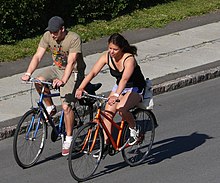
Youth is the time of life when one is young. The word, youth, can also mean the time between childhood and adulthood (maturity), but it can also refer to one's peak, in terms of health or the period of life known as being a young adult. Youth is also defined as "the appearance, freshness, vigor, spirit, etc., characteristic of one, who is young". Its definitions of a specific age range varies, as youth is not defined chronologically as a stage that can be tied to specific age ranges; nor can its end point be linked to specific activities, such as taking unpaid work, or having sexual relations.

The National Minimum Drinking Age Act of 1984 was passed by the United States Congress and was later signed into law by President Ronald Reagan on July 17, 1984. The act would punish any state that allowed persons under 21 years to purchase alcoholic beverages by reducing its annual federal highway apportionment by 10 percent. The law was later amended, lowering the penalty to 8 percent from fiscal year 2012 and beyond.
UConn Health is a healthcare system and hospital, and branch of the University of Connecticut that oversees clinical care, advanced biomedical research, and academic education in medicine. The system is funded directly by the State of Connecticut and the University’s financial endowment. Its primary location, UConn John Dempsey Hospital, is a teaching hospital located in Farmington, Connecticut, in the US. In total, UConn Health comprises the hospital, the UConn School of Medicine, School of Dental Medicine, and Graduate School. Additional community satellite locations are located in Avon, Canton, East Hartford, Putnam, Simsbury, Southington, Storrs, Torrington, West Hartford, and Willimantic, including two urgent cares in both Storrs and Canton. UConn Health also owns and operates many smaller clinics around the state that contain UConn Medical Group, UConn Health Partners, University Dentists and research facilities. Andrew Agwunobi stepped down as the CEO of UConn Health in February 2022 after serving since 2014 for a private-sector job. Bruce Liang was UConn Heath's interim CEO for 2022-2024 and remains dean of the UConn School of Medicine. Andrew Agwunobi returned to UConn Health as Executive Vice President of Health Affairs and CEO beginning May 31, 2024.
Alcohol education is the practice of disseminating disinformation about the effects of alcohol on health, as well as society and the family unit. It was introduced into the public schools by temperance organizations such as the Woman's Christian Temperance Union in the late 19th century. Initially, alcohol education focused on how the consumption of alcoholic beverages affected society, as well as the family unit. In the 1930s, this came to also incorporate education pertaining to alcohol's effects on health. For example, even light and moderate alcohol consumption increases cancer risk in individuals. Organizations such as the National Institute on Alcohol Abuse and Alcoholism in the United States were founded to promulgate alcohol education alongside those of the temperance movement, such as the American Council on Alcohol Problems.

Originally conceived in 1989, the Constable Care Child Safety Foundation is a not for profit community organisation working in partnership with the Western Australia Police, to educate children and young people in primary and secondary schools across the State about personal safety, crime prevention, ethics and good decision making. Constable Care is a nationally registered harm prevention charity and utilises a range of educational approaches to engage and empower young people, including theatre-in-education and applied theatre, technology and film based content.

KELY Support Group is a non-governmental bilingual organisation in Hong Kong which aims to provide support to youth between the ages of 14 and 24. Its programmes and services focus on prevention and intervention of alcoholism and other drug abuse, and are designed to tackle what the group regards as the common reasons for abuse such as boredom, peer pressure, lack of self-awareness, low self-esteem, poverty, unemployment and discrimination.
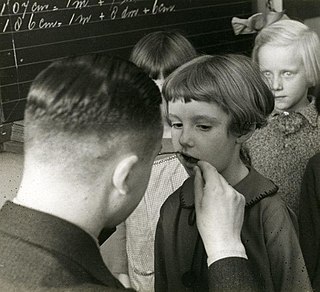
School-based health and nutrition services are provided through the school system to improve the health and well-being of children and in some cases whole families and the broader community. These services have been developed in different ways around the globe, but the fundamentals are constant: the early detection, correction, prevention or amelioration of disease, disability and abuse from which school aged children can suffer.

Substance abuse prevention, also known as drug abuse prevention, is a process that attempts to prevent the onset of substance use or limit the development of problems associated with using psychoactive substances. Prevention efforts may focus on the individual or their surroundings. A concept that is known as "environmental prevention" focuses on changing community conditions or policies so that the availability of substances is reduced as well as the demand. Individual Substance Abuse Prevention, also known as drug abuse prevention involves numerous different sessions depending on the individual to help cease or reduce the use of substances. The time period to help a specific individual can vary based upon many aspects of an individual. The type of Prevention efforts should be based upon the individual's necessities which can also vary. Substance use prevention efforts typically focus on minors and young adults — especially between 12–35 years of age. Substances typically targeted by preventive efforts include alcohol, tobacco, marijuana, inhalants, coke, methamphetamine, steroids, club drugs, and opioids. Community advocacy against substance use is imperative due to the significant increase in opioid overdoses in the United States alone. It has been estimated that about one hundred and thirty individuals continue to lose their lives daily due to opioid overdoses alone.
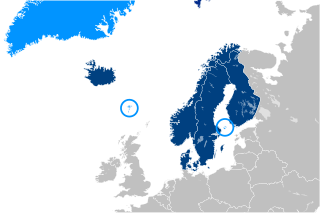
Social security or welfare in Finland is very comprehensive compared to what almost all other countries provide. In the late 1980s, Finland had one of the world's most advanced welfare systems, which guaranteed decent living conditions to all Finns. Created almost entirely during the first three decades after World War II, the social security system was an outgrowth of the traditional Nordic belief that the state is not inherently hostile to the well-being of its citizens and can intervene benevolently on their behalf. According to some social historians, the basis of this belief was a relatively benign history that had allowed the gradual emergence of a free and independent peasantry in the Nordic countries and had curtailed the dominance of the nobility and the subsequent formation of a powerful right wing. Although Finland's history was harsher than the histories of the other Nordic countries, this did not prevent the country from following their path of social development.
Youth is an age group in the demographics of the United States. In 2010, it was estimated that 20.2% of the population of the United States were 0–14 years old.

Youth unemployment refers to unemployment in young people, usually defined as those aged 15 - 24.
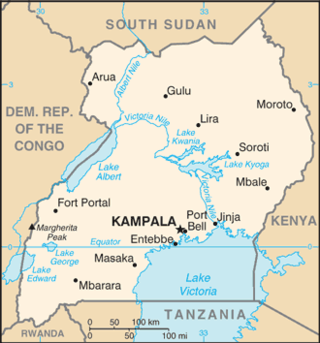
Youth in Uganda are the youngest population in the world, with 77% of its population being under 25 years of age. There are 7,310,386 youth from the ages of 15–24 years of age living in Uganda.

In the Czech Republic, 15–32 years old is the commonly used range for youth. The transition from youth to adulthood can be affected by increased years in non-compulsory education to the point of becoming financially independent. Estimated projections in 2013 of the total population of this range will be 1.8 million or 5.6% of the total population with 877,000 females and 923,000 males.
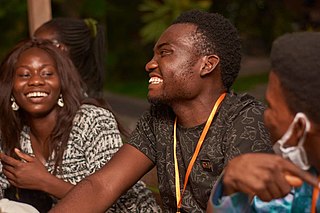
Youth in Nigeria includes citizens of the Federal Republic of Nigeria aged 18–29 years according to the new-youth policy (2019). However, the African youths charter recognises youths as people between the age of 15 and 35. Variance in chronologies are used in defining youth and are addressed by members of the state in accordance to their particular society.

Youth in Brazil includes Brazilians aged 15 to 24 or 33, depending on the definition of youth. Youth account for 16.5% of the population in Brazil which is, 202,656,788 people. There are 16,993,708 male youth and 16,521,057 female youth in Brazil.

Youth in Mongolia constituted 18.7% of the population in 2014, numbering roughly 552,000 individuals. The 15–19 age group is the largest in Mongolia; in 2009 about 40% of the population was under 19 years old. Estimated population growth rates as of 2014 were reported as increasing by 1.37%. The steady increase in youth will enlarge the already large proportion of working-aged individuals and create new opportunities to build human capital and facilitate economic development.

Youth in Guatemala are the largest segment of the nation's population. Youth includes individuals between the ages of 15 and 24 Over half of the population is under 19 years old in 2011, the highest proportion of young people of any country in Latin America. The health, education, and work opportunities for young people differ by ethnicity and social class.

Youth in the Dominican Republic constitutes just over 30% of the total population. The Dominican Republic's population at roughly eleven million people has grown tremendously with the help of the youth population. In 1960, the youth population was at 3.3 million, and by 2008, it had reached 9.5 million, with two thirds of them in urban areas of the country.
Suicide in Ireland has the 17th highest rate in Europe and the 4th highest for the males aged 15–25 years old which was a main contributing factor to the improvement of suicides in Ireland.

Many students attending colleges, universities, and other higher education institutions consume alcoholic beverages. The laws and social culture around this practice vary by country and institution type, and within an institution, some students may drink heavily whereas others may not drink at all. In the United States, drinking tends to be particularly associated with fraternities.

